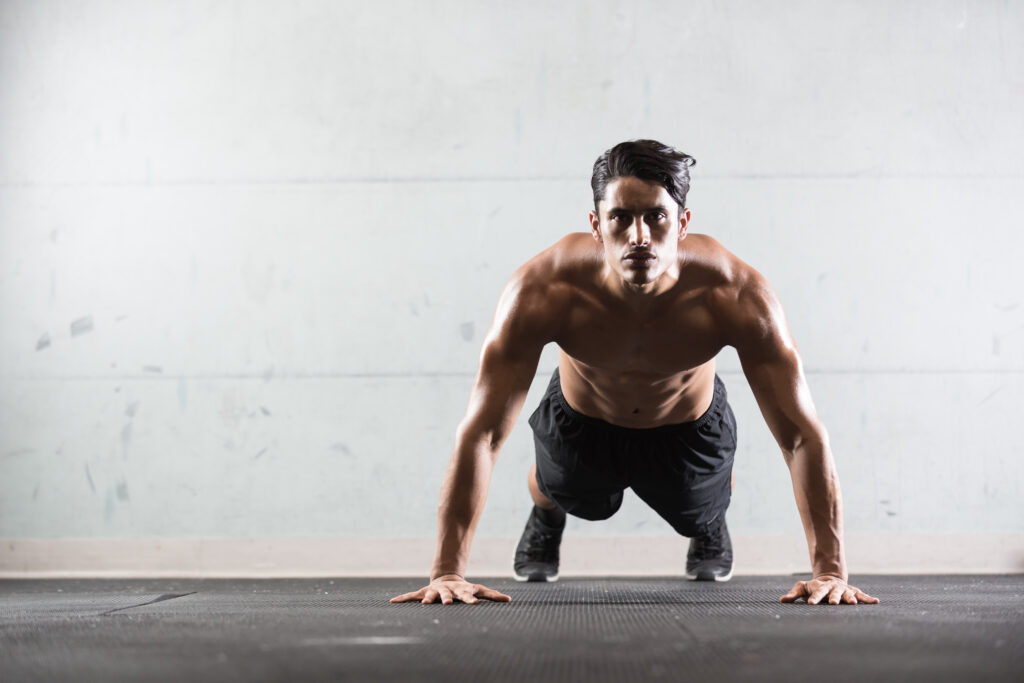Dan John discovered loaded carries by accident.
It was 2001 and the strength coach was sidelined by injury. So he did farmer’s walks because he wanted to feel like he was still training.
But when he recovered, a funny thing happened: “I looked and performed better.”
Loaded carries had a convert, and John went on to popularise them in the fitness world.
These exercises present a serious challenge for the core muscles, according to research by Dr Stuart McGill, of the University of Waterloo. A stronger, tighter core gives your arms and legs a more powerful base for running fast, throwing hard and performing heavy lifts. The moves also nail your lats while improving your grip strength and shoulder stability.
The benefits aren’t limited to individual muscles. “Loaded carries build work capacity,” John says, so you can do more gym work and do it better.
There are plenty of ways to build capacity, but you won’t find one that’s safer. “It’s really hard to hurt yourself when you’re walking around,” he says.
Do carries at any point in your workout – they’re especially great at the end, when you’re fatigued and your balance and co-ordination are hindered. But no matter when you do them, the payoff is the same: a bigger, stronger body that’s better at anything you ask it to do.
TECHNIQUE
Maximise your loaded carries by following these technique tips.
“PACK” YOUR SHOULDERS
Whether you’re holding the weight at your sides, overhead or anywhere in-between, keep your shoulders as tight as possible to improve joint stability.
STRAIGHTEN YOUR BACK
Think of carries as walking planks: keep your lower back and pelvis aligned throughout the exercise.
GRIP HARD
A tight grip increases tension in your core muscles.
STEP LIGHTLY
A shorter stride – your feet less than 30 centimetres apart – gives you a stronger support base.
TUCK YOUR CHIN
Keep your ears directly over your shoulders and hips. This aligns your spine, keeping it injury-free.
KEEP YOUR RIBS FLAT
If they flare out, you’re putting undue stress on your back. Breathe in through your nose then forcefully out through your mouth. This pushes your ribs down and keeps your core engaged.
GO HEAVY
Carries are self-limiting exercises. That means any weight that you can hold for the recommended distance or duration is safe to use.
HOW TO CARRY THE LOAD
There are four types of carries, and each challenges your body in different ways, says exercise physiologist and competitive strongman Dr Pat Davidson.
Try all seven variations below. Do one every training session, making sure you’ve hit all four categories after four workouts.
DUCK WALK
Hold a kettlebell in each hand between your legs. Or cup the top end of a dumbbell and let it hang between your legs at knee height.
Holding a heavy load between your legs works your glutes harder.
FARMER’S WALK
Hold a dumbbell, kettlebell or barbell at each side. Grip tightly. (For loads exceeding 90 kilograms, use a trap bar with weight plates.)
Because you can use such heavy weights with the farmer’s walk, it builds insane total-body strength.
SUITCASE CARRY
Hold a weight – dumbbell, kettlebell or an actual suitcase – on one side. Walk for the same distance or time with the other side loaded.
ZERCHER WALK
Hold a loaded barbell close to your chest in the crook of your elbows. Keep your core braced and your back straight throughout.
Front-loaded variations are particularly taxing on your hamstrings and biceps.
BEAR HUG
Wrap both arms around a sandbag, weight plate or large rock. Or hold a dumbbell or kettlebell just as you do for a goblet squat.
OVERHEAD WALK
Hold one or two dumbbells or kettlebells (or a sandbag, barbell or trusting girlfriend) directly over your shoulders.
Overhead variations will target shoulder stability.
BOTTOMS UP
Hold a kettlebell upside down, your upper arm parallel to the floor and your elbow bent 90°. Squeeze the handle tight. This variation will nail your grip strength.
STRIDE RIGHT
There’s value in mixing up your distances and loads, says Davidson. “In strongman training, we might carry something ridiculously heavy for just 10 metres, which is a killer test of raw strength. Or we might have to carry something relatively light for a longer distance, which challenges strength endurance.”
Train different fitness skills by using the rough guide below when you do the farmer’s walk, suitcase carry, Zercher walk and bear hug walk. The percentage of body weight equals the total load you should work up to carrying for the distance.
BUILD MORE STRENGTH
100% BODY WEIGHT = 15 METRES
GO LONG AND HEAVY
75% BODY WEIGHT = 50 METRES
CHALLENGE YOUR ENDURANCE
50% BODY WEIGHT = 100 METRES



















